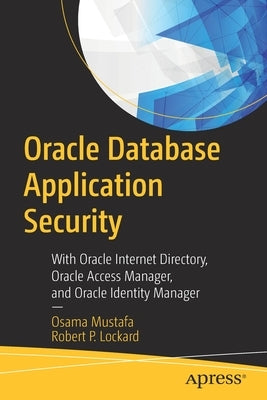Description
Readers will go through Transparent Data, Back-up and Network Encryption. They will learn to work with ghost data and cross border issues with networks
- Transparent Data Encryption 1. Keystore 2. Column Encryption 3. Tablespace Encryption 4. External Table Encryption 5. Ghost Data a. How it happens b. How to fix it. 6. Column Encryption 7. Tablespace Encryption a. Full Database Encryption b. Online Encryption 8. External Tables 9. Algorithms
- Backup encryption 1. RMAN 2. Data Pump- Network 1. Configuration a. Require b. Request c. Accepted d. Rejected 2. Cross Border Issues 3. Integrity
Chapter 02 - Audit
This chapter will take readers through the audit process. They will learn about key policies and identity preservation. Readers will also take a look at how fine grain audits work.
- Identity Preservation
- Policy
- Needs to tell 1. Who 2. What 3. When 4. Where 5. How
- Fine Grained Audit Chapter 03 - Virtual Private Database
This chapter will teach readers key intrusion detection tools like Database Firewall and SNORT. Readers will also get tips on managing Configuration Drift, profiles and default users.
- Intrusion Detection tools 1. Database Firewall 2. SNORT
- Configuration Drift 1. Connections a. New b. Frequency 2. ORACLE_HOME a. Tripwire 3. Objects a. New b. Altered c. Dropped
- Users 1. Object Access a. Privilege Analysis b. Grants Roles S/U/I/D/E Column c. Fine Grained Access Control (VPD)
- Profiles
- Default users 1. Can you drop them? 2. Default password 3. Impossible password 4. Expired 5. Locked
Chapter 04 - File System Access
Readers will learn about tools to access file systems.
- Directories- utl_file
Chapter 05 - Network access and Evaluation
This chapter will teach readers about accessing networks with tools like ACL and DBSAT. Readers will also look at some network evaluation tools.
- ACL- Evaluation Tools- DBSAT
Chapter 06 - Coding
Chapter will be about understanding secure coding standards. Readers will also learn about SQL Injection.
- Importance of secure coding standards.- Multi-Schema database model. 1. Decorations Schema 2. Business Logic Schema 3. API Schema 4. Data Objects Schema 5. Errors / Help Desk Schema- Public Synonyms- Sys_context- Accessible by- Authid 1. Definer's rights 2. Current_user (invoker) 3. Inherit privileges- Code Based Access control- Sql injection 1. Secure shell- Error messages
Author: Osama Mustafa, Robert P. Lockard
Publisher: Apress
Published: 11/01/2019
Pages: 341
Binding Type: Paperback
Weight: 1.11lbs
Size: 9.21h x 6.14w x 0.75d
ISBN13: 9781484253663
ISBN10: 1484253663
BISAC Categories:
- Computers | Security | General
- Computers | Data Science | General
- Computers | Database Administration & Management
About the Author
Osama Mustafa is a database specialist, an Oracle ACE Director, Certified Oracle Professional (10g, 11g), Certified Ethical Hacker and Sun System Administrator. Osama currently works as an Oracle Instructor in the Middle East. He also works on troubleshooting and the implementation of database projects. He spends his free time on Oracle OTN forums and publishes many articles, including Oracle database articles, on his blog.
Robert P. Lockard is an Oracle ACE Director, a professional Oracle DBA, designer, developer, and project manager with more than three decades of experience. For the past twenty years he has worked as an independent consultant providing quality services to his customers at a reasonable price. Robert has worked in financial intelligence tracking money laundering, terrorist money, and identity theft. He has also worked in the cyber crimes arena tracking attacks on information systems. He specializes in evaluating and securing your Oracle database environment from threats both external and internal.

